Display and Battery Life in the Razer Blade 14" 1080p (2015)
by Joshua Ho on September 16, 2015 8:00 AM EST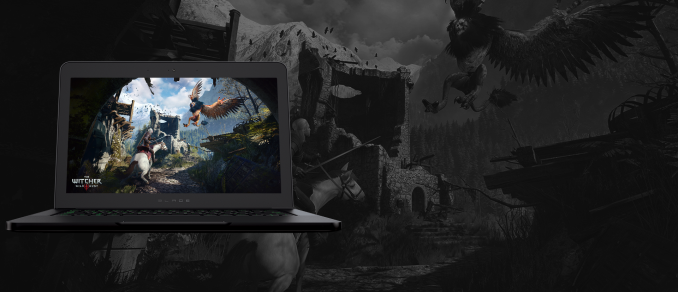
A few months ago, we reviewed the Razer Blade 14” (2015) which we found to be a great laptop for those that wanted something thin and light but could still be used as a gaming PC. However, one of the big questions that was left unanswered with that review was whether the 1080p version of the laptop would have advantages in battery life, and whether the display was of the same quality as the QHD+ variant outside of differences in resolution. So to answer the question we reached out to Razer, who sent over the 1080p version of the Blade with Windows 10 for further evaluation.
While advantages in battery life could be interesting, the most important part to look at first is the display itself. In order to test this, we use SpectraCal’s CalMAN 5 with a custom workflow, along with X-Rite’s i1Pro2 spectrophotometer and i1DisplayPro colorimeter.
In the case of the Razer Blade 14” 1080p, it seems that Razer has elected to fit this variant with LG’s LP140WF3-SPD1 IPS display. Unlike the Sharp QHD+ panel, this LG IPS display uses traditional a-Si (amorphous silicon) to create the thin film transistors that control the liquid crystals in the display. This means that electron mobility is relatively low compared to IGZO, which means power efficiency on a per-transistor basis will be lower.
Unlike the QHD+ panel, this 1080p also has a matte display. For those that are unfamiliar with the difference that this creates, matte displays attempt to reduce specular reflections which create the mirror effect that glossy displays can have. However, the price of this generally reduced clarity and ultimately since matte coatings don’t do any sort of interference to eliminate reflections diffuse reflections are still present which can wash out the display.
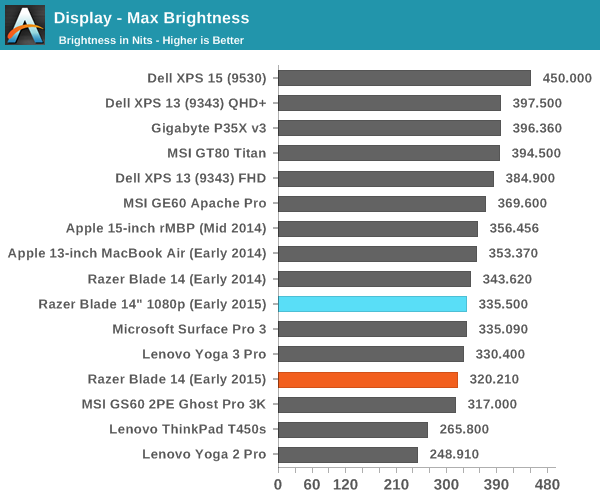


If we look at some of the basic tests of brightness and contrast, the panel is roughly equivalent to the QHD+ variant of the Razer Blade, but black levels are higher which makes contrast lower. This is likely due to the lower Ion/Ioff ratio of a-Si compared to IGZO TFTs. It’s worth noting here that minimum brightness on the Blade 1080p is below 20 nits relative to the 80-90 nits that the QHD+ gets, so night time use should feel less like staring into the face of the sun.
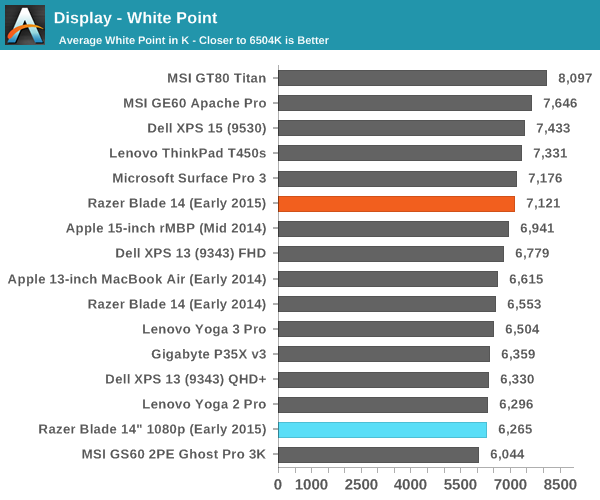
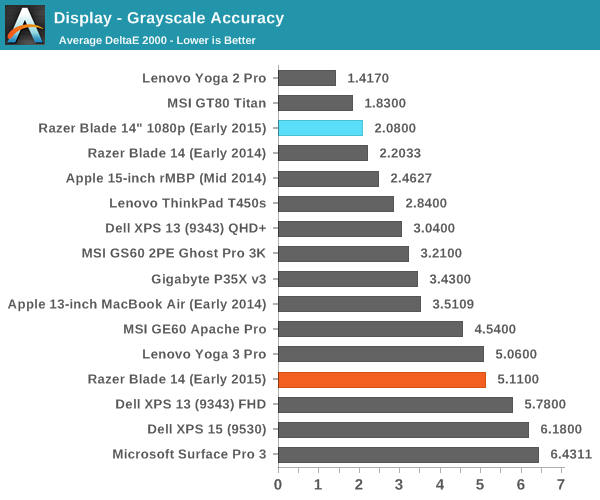
Out of the box for grayscale, it’s clear that Razer is taking calibration at least somewhat seriously judging by the presence of their own color profile for the display in the color management settings. This is set by default, and with it grayscale calibration is already quite acceptable for work that needs color accuracy. The display does end up a bit warm but the difference from neutral shouldn’t be too noticeable.
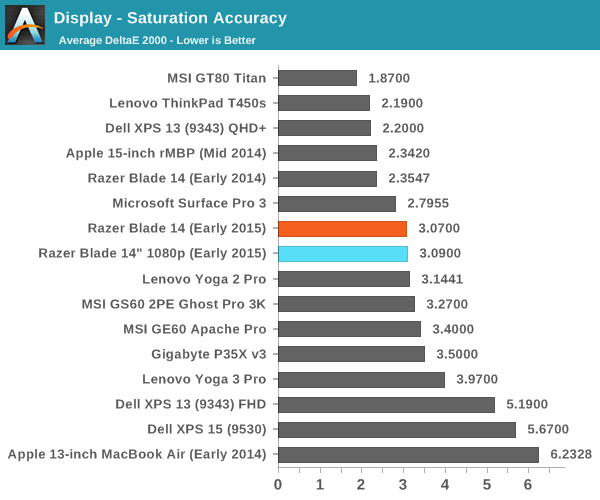
Moving on to the saturation sweep, it’s apparent that the gamut of the display isn’t quite right at roughly 90% sRGB, and as a result colors won’t be 100% accurate. The deviations aren’t enormous, but they’re there for green and red and will affect color-critical work. It’s likely that this should help with power efficiency for what it’s worth.

In the GMB ColorChecker, overall accuracy ends up behind the QHD+ variant due to the difference in gamut. It isn’t much, but it’s worth noting.
In order to test calibrated accuracy, we calibrate the display using our custom workflow and the i1Pro2 before running the same tests again, with all calibration done at 200 nits.
Overall, the display does see some improvement in grayscale but because the display has a gamut problem there’s basically not much that can be done here to improve color accuracy. Accuracy is good enough for just about anyone that will use this laptop, but people that are looking for a display that is almost perfectly covering sRGB should look towards the QHD+ variant.
The next area of interest in this variant of the Razer Blade is definitely battery life. As pretty much everything else can be held constant, the main difference between the 1080p and QHD+ variants this time around can be solely attributed to the display in these tests, as something like RAM isn’t going to have an enormous effect on battery life. In order to test this, we run our standard battery life tests in which the display of the laptop is set to 200 nits brightness, with Power Saver mode enabled with some standardization of advanced power settings within the mode. We then run a loop of certain workloads timing the device from when it’s first unplugged until the laptop dies.

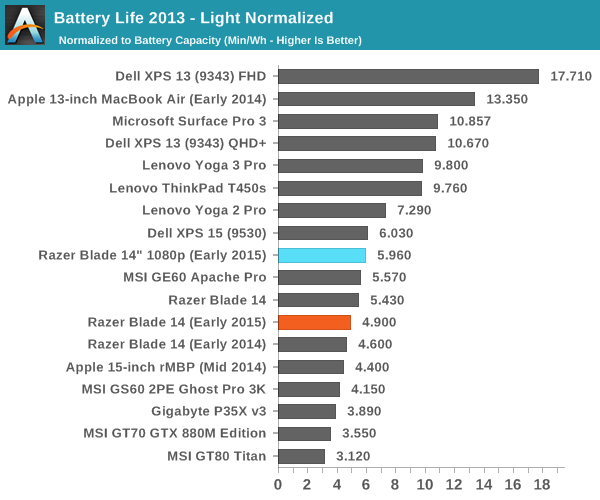
Our first test, which is simply light web browsing, we can immediately see the trade-off that results from the higher resolution of the QHD+ display despite the use of more power-efficient IGZO TFTs. The 1080p Razer Blade gets roughly 22% better battery life in this scenario which is all in the form of higher power efficiency. The 1080p Blade averages roughly 10W throughout this test assuming nominal battery capacity, while the QHD+ Blade averages roughly 12W in this test. Given that this is basically all simple 2D GPU work, I suspect most of the delta here is from display power rather than the GPU increasing clock speed to keep up with the higher resolution.
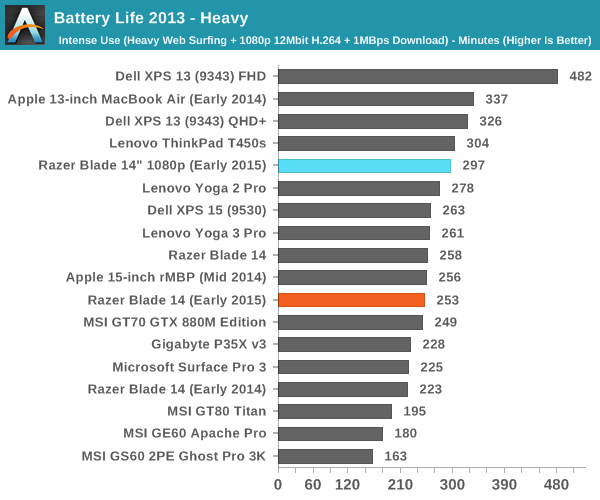
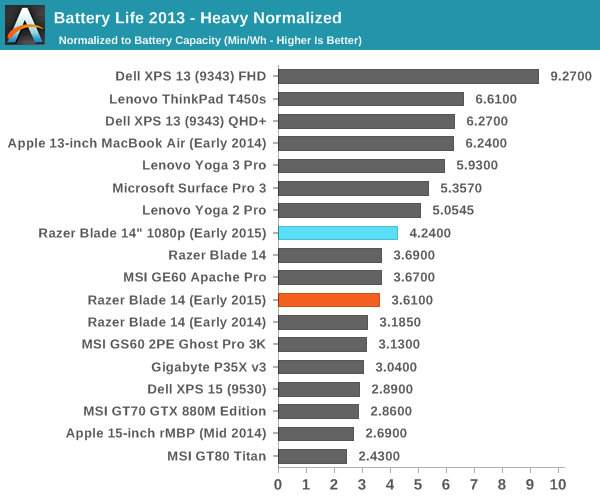
In the heavy test, we can see that the same result plays out, but the gap between the two systems shrinks slightly to 17% instead of 22%, which is because the rest of the system becomes much more dominant in regards to battery life. Here, the Blade 1080p is using about 14W average throughout the test while the Blade QHD+ is using roughly 16.5W. Given that the difference is effectively constant, it’s probably a pretty safe bet that the delta in display power is mostly intrinsic to the display itself.
Overall, for those that are still wondering whether the 1080p or QHD+ Blade is the right way to go here, it’s a tough call. The QHD+ Blade unquestionably has the better display, as someone that has spent over a year using the Blade 14” (2014) as their primary PC. However, the 1080p Blade’s display is still quite good, with decent color accuracy and resolution.
In terms of tradeoffs between the two, on a personal level the matte display is annoying to me because I strongly prioritize display clarity. On the other hand, the 1080p Blade has significantly more battery life, on the order of a 2W reduction at the same brightness level. This may not make a difference when you’re dissipating an average of 80W+ in a gaming scenario, but in any light use scenario like simple web browsing battery life will definitely be a noticeable jump up. The 1080p Blade is also cheaper, but with 8GB of RAM running VMs and other RAM-hungry applications like Chrome will necessitate avoiding excessive multitasking to avoid commit charges well north of 8GB.
Regardless, if battery life is critical I would go with the 1080p variant. On the other hand if you value multitasking or display quality more strongly than extra hour or so the 1080p version will get you, I would still go with the QHD+ variant.


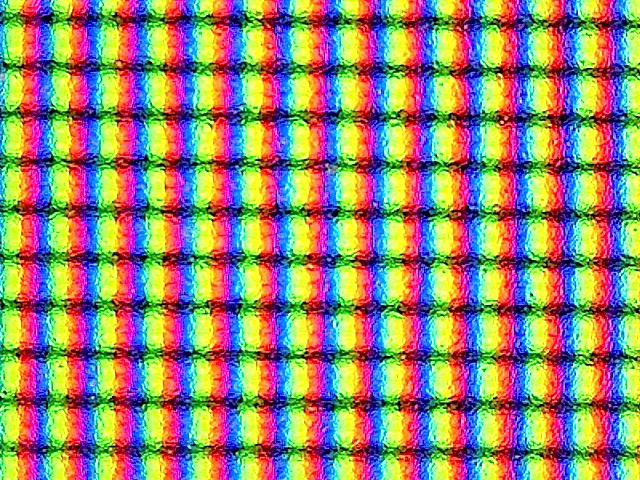

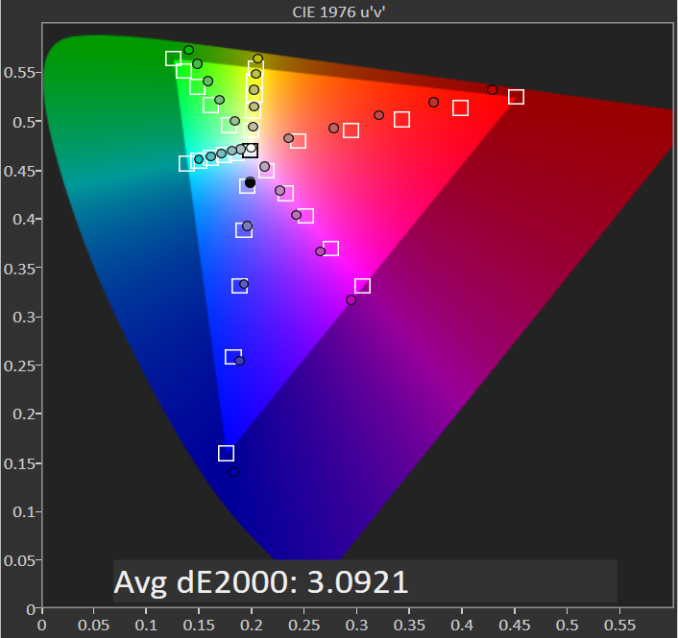
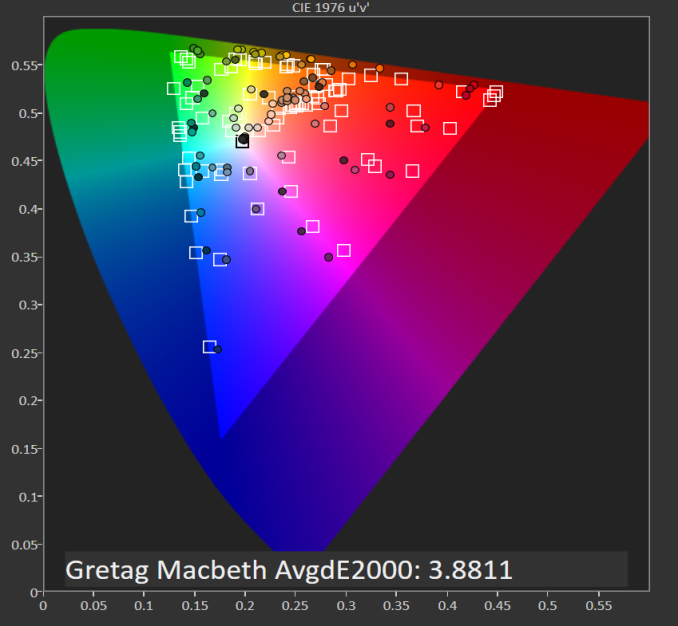
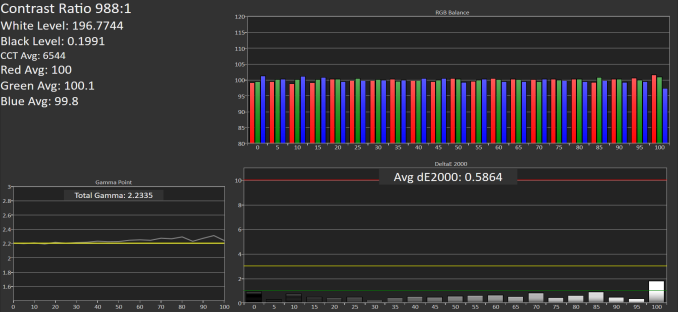
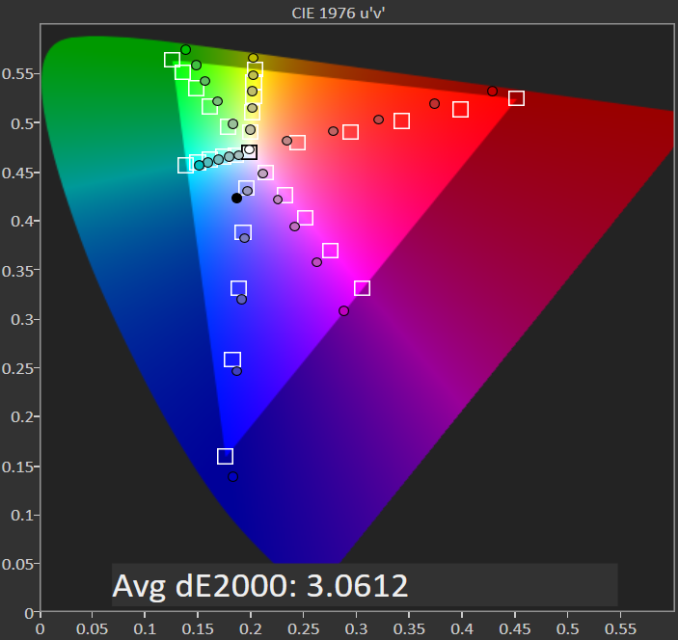
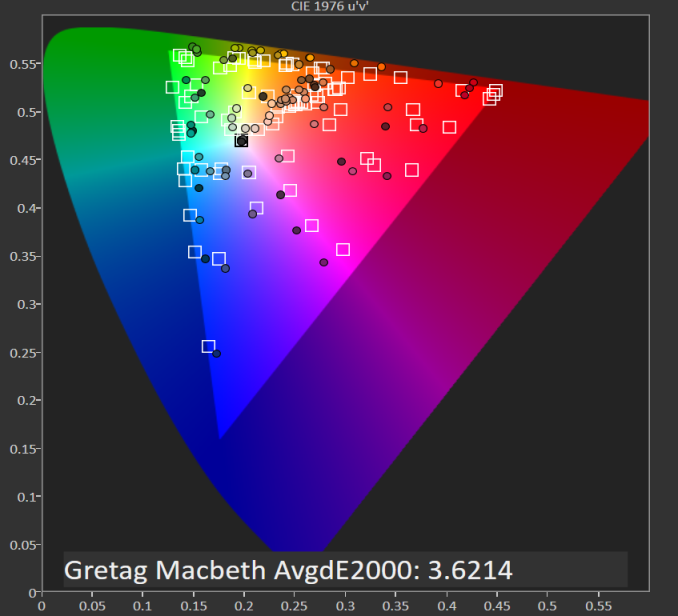








22 Comments
View All Comments
BrokenCrayons - Wednesday, September 16, 2015 - link
Price and specifications probably play a much bigger role in the display resolution choice than does battery life for those people that are planning to use their Blade for gaming as they'll very likely be plugged into a wall outlet in those situations. However, if this difference is similar in smartphones and non-gaming laptops (or gaming laptops that end up getting used frequently for non-gaming chores or spend a lot of time away from outlets), I can see some pretty significant arguments in favor of lower resolution screens.It's great you guys took the time to analyze this. I'm actually surprised there's that much of a difference. 20% is absolutely not insignificant.
Jon Tseng - Wednesday, September 16, 2015 - link
1080p is actually a better fit for the GPU. After all if you're going for a Blade it's for the gaming right otherwise you may as well just get a MacBook.Fitting the screen resolution to the (inevitably) limited GPU is the secret to a good gaming laptop - the old Alienware m11x is a case in point by going for 1366x768 they made a careful trade-off between a lower resolution panel which could run games natively given the GPU which fit in the thermal envelope.
The downer however is that lower res panel isn't touch which is a sine qua non in a Windows 8/10 world. To be that's a deal breaker otherwise it would be 1080p all the way!
ImSpartacus - Wednesday, September 16, 2015 - link
It's a much better fit, no doubt about that.I love the m11x reference. It was a very well balanced machine for what it tried to do. The 1080p blade has more than a few similarities.
kgh00007 - Wednesday, September 16, 2015 - link
You guys need to get in the Alienware 15 for review!geniekid - Wednesday, September 16, 2015 - link
I'm glad you guys revisited this. The reviews for the 1080p version are very sparse even though I think there's a strong argument to be made in favor of the 1080p model if your primary use is gaming (heck, the majority of gaming benchmarks in the original AT review are done at 1080p). I guess everyone assumes performance is unchanged between the QHD+ and 1080p models but one or two benchmarks to validate this would be welcome.I also note that the original review used a single game running in 3200x1800 for the noise and temperature benchmarks. It would be nice to see comparable benchmarks.
JoshHo - Wednesday, September 16, 2015 - link
Noise and temperature will be comparable if you run at the same display resolution. The difference in power consumption will be minute at best, and effectively non-existent when running at maximum TDP.geniekid - Thursday, September 17, 2015 - link
Noise and temperature in the original review were measured while running Tomb Raider at 3200x1800. There is no data in either review on noise/temperature after gaming in 1080p.I guess we must assume the heat/noise/power characteristics are all the same as long as one is running a game.
JoshHo - Sunday, September 20, 2015 - link
It will be similar as power consumption in intense scenarios is such that the extra power budget given by the 1080p display is used up by the GPU/CPU.In my experience with these laptops it is necessary to keep fanspeed at maximum in any gaming/intense compute scenario. Both the Blade 2014 and 2015 in all variants will maintain at least nominal clock speeds in these scenarios if the fans are spinning at maximum, with turbo if load remains below 90-100% on average.
TypeZer0 - Thursday, September 17, 2015 - link
I'm curious, was the same battery used in both laptops when testing? Could some of the longer run times be attributed to the newer battery on the 1080p laptop?TrackSmart - Thursday, September 17, 2015 - link
I think that both cases are unlikely. I'm guessing that the previous laptop was given back a long time ago, so both laptops were tested using the batteries they came (i.e. new batteries). It would be time consuming to run all of the same tests again on a laptop that has already been tested, unless there was a strong reason to do so (i.e. a major bios update that improves performance or battery life). Besides, if they reran the tests on the previous laptop and got considerably lower battery life results this time around, it would be an obvious giveaway that something was wrong.Just my 2 cents.